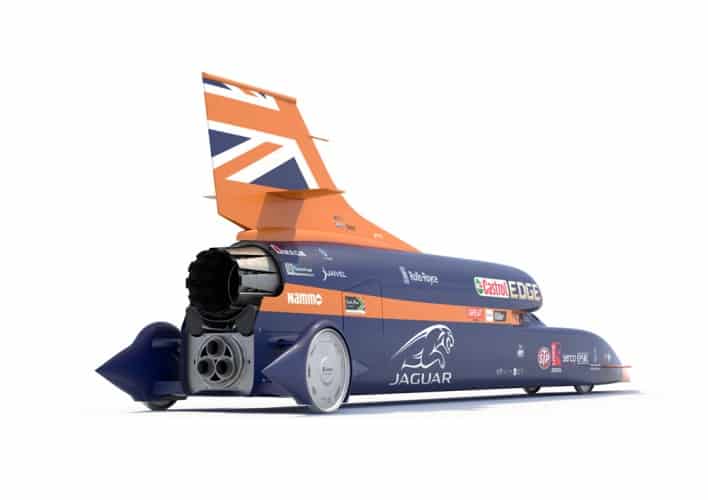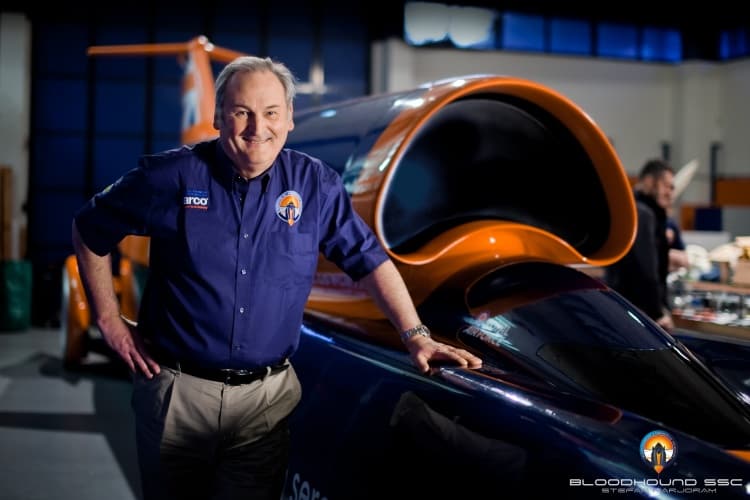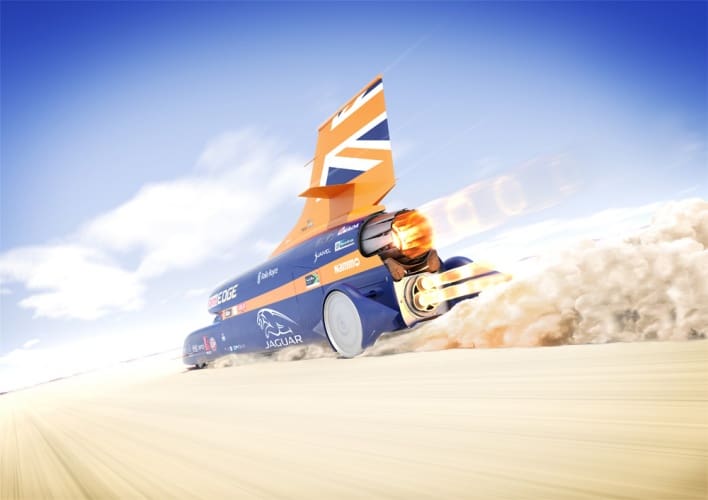
After securing additional financial support for the project, the team has been able to lay out a roadmap for the next 16 months. Many of Bloodhound’s engineers who had taken short-term contracts elsewhere will now return to the project full-time to begin preparing the vehicle for its record attempt on the Hakskeen Pan in north-western South Africa.
“This is probably the biggest moment in the project’s history,” said project director Richard Noble. “Before we could only see financially a few months ahead but now we can put our foot down and really go for it!”
The Bloodhound streamliner was first unveiled to the public in September last year, following a trial-build to confirm that the vehicle’s 3,500 bespoke components all fit together correctly. Bloodhound will now be disassembled carefully, with every step documented in fine detail to create a user manual that the team can refer to once on site in the Kalahari Desert.

Modifications and new parts will be added where necessary when Bloodhound is put back together, with the supersonic car then transported to Newquay Aerohub for tie-down tests of its EJ200 jet and Nammo rocket system. Newquay will also be the site of Bloodhound’s first run under its own power, when on June 2017 it undergoes a shakedown test at speeds of around 220mph. As well as testing a range of mechanical components, this will also be an opportunity to live-stream data and imagery from the car for the first time, something that is central to Bloodhound’s open mission.
After the shakedown test, Bloodhound will be airlifted to Upington, South Africa, then transported by road to the team’s desert base at Hakskeen Pan. 16 container-loads of equipment will have arrived ahead of the vehicle, and the base will act as a self-contained village complete with engineering workshop and TV studios. Final preparations and testing will then take place before the record attempts begin, and Bloodhound seeks to push beyond the 1,000 mph barrier.

Jon Hilton, president of the Institution of Mechanical Engineers (IMechE), commented: “Bloodhound SSC is one of the most exciting and ground-breaking projects happening in UK and the Institution is delighted to be able to support it by being one of the project’s key sponsors.”
“The project is also UK engineering at its most cutting-edge and the open access nature of the project means that the advances made to develop this car could potentially be used in a myriad of different applications and by different industries.”





Swiss geoengineering start-up targets methane removal
No mention whatsoever about the effect of increased methane levels/iron chloride in the ocean on the pH and chemical properties of the ocean - are we...